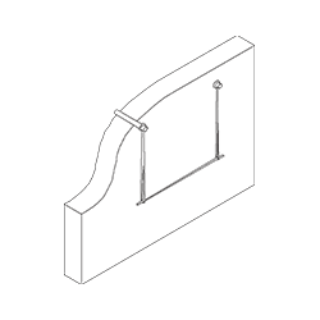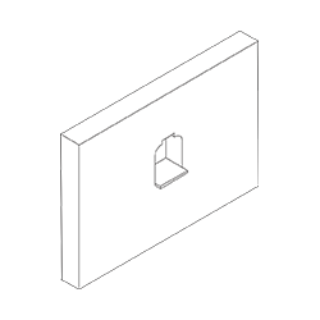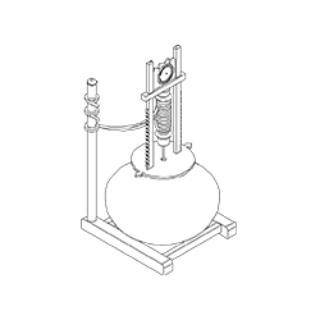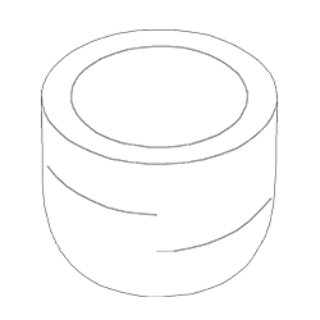Haryana
Haryana is one of the smallest states in India with an area of 44, 212 square kilometres. The state of Haryana is landlocked and surrounded by Himachal Pradesh to the north, Delhi and Uttar Pradesh in the east, Punjab to the north-west and Rajasthan in the south and south-west. The Yamuna river and the Shiwalik hills border the north-east. The south and south-west region is semi-arid, and an extension of the Aravalli ranges runs through parts of Mahendragarh, Rewari, Gurgaon, Bhiwani and Jhajjar districts.
2205
Furnituredocumented
15499
Distancetravelled (km)
470
Peoplemet
Haryana is divided into five cultural regions; Ahirwal, Mewat, Bagar, Nardak and Khadar. Ahirwal, in the southwest, borders Rajasthan and is home to the Ahirs. Mewat, also in the south, and also bordering Rajasthan, is home to the Muslim Meo community. Bagar, in the west, derives its name from the Bagari dialect, which is shared across the border with Rajasthan. The Nardak region in the north has close ties with Himachal Pradesh, and many people speak Pahari in the districts of Panchkula, Yamunanagar and some parts of Ambala. Elsewhere in Nardak, Punjabi is spoken among the communities of Punjabis and Jats. The heartland of Haryana is Khadar. The fertile soil near the Western Yamuna Canal and Satluj Yamuna Link Canal helps the farmers to grow commercial crops like rice, sugarcane and wheat. The dialect Khadi boli is spoken here. The state is further divided into 22 political districts which govern numerous towns and villages.
Places visited- 111
Typology of furniture- 39
Outputs- 10
Though small, Haryana has a lot of cultural diversity. One aspect of this diversity is reflected in the area called Ahirwal, Heerwal, Heerwati or Ahirwati. The word has two parts, Ahir and wati which means where Ahirs live. Rewari, Mahendragarh, Charkhi Dadri in southern Haryana are the areas in which the majority of people are Ahirs. Their main occupation is agriculture, while many have been named in defence forces. Their language is Ahirwati. The Ahirwal region is generally a plain area particularly the northern and the eastern part, however, in the south some residual hills of the Aravali chain show the topography of undulating character.
The tableau of Faridabad, Palwal and nearby areas have a distinct cultural identity. This region is called Mewat because it is inhabited by the Meos community. The Mewati dialect is different from others spoken in Haryana. The Meos, at some period of Mughal history, converted in mass to Islam. Some of their old customs are still maintained. Mewati is spoken and has an influence of Urdu.
The Bagar region derives its name from the Bagari dialect. In this region, people are found speaking bagari dialect the most. Bagari is one of the vernacular dialects and are mainly found in parts of Rajasthan, Punjab and Haryana states of India. In Haryana, this region consists of Hisar, Bhiwani, Sirsa and Fatehabad.
The Nardak region, which is the northern part of Haryana consists of Panchkula, Ambala, Kurukshetra, Yamunanagar and Kaithal. The districts of Panchkula, Yamunanagar and some parts of Ambala, people speak Pahari language as they are closer to Himachal Pradesh, whereas in the rest of the region, there has been an influence of Punjabi language. This region is mostly occupied by Jats and Punjabis.
The heartland of Haryana is Khadar that consists of the districts of Rohtak, Jhajjar, Sonipat, Panipat and Jind. The soil in Khadar region is sandy and loamy, full of nutrients and retains water. The fertile soil near the western Yamuna canal and Satluj Yamuna Link canal, allows the farmers of this area an opportunity to grow commercial crops like rice, sugarcane and wheat. Khadi boli is spoken here. It is a mixture of Braj, Awadhi and Bhojpuri.
 Sandook (Cabinet)
Sandook (Cabinet) Peti or Sandook (Chest)
Peti or Sandook (Chest) Kothi & Kuthla (Granary)
Kothi & Kuthla (Granary) Bilangni or Alagni (Hanger)
Bilangni or Alagni (Hanger) Almari & Khuniya (In-built cabinet)
Almari & Khuniya (In-built cabinet) Todhi (Lamp holder)
Todhi (Lamp holder) Jaali (Larder)
Jaali (Larder) Taand, Tandi or Chhajji (Shelf)
Taand, Tandi or Chhajji (Shelf) Aala or Aali (Wall niche)
Aala or Aali (Wall niche) Khuti (Wall peg)
Khuti (Wall peg) Paindi, Palaindi, Parhendi or Parinda (Water pitcher storage)
Paindi, Palaindi, Parhendi or Parinda (Water pitcher storage) Penda (Water pitcher storage)
Penda (Water pitcher storage) Ghadaunj or Tipaai (Water pitcher storage)
Ghadaunj or Tipaai (Water pitcher storage)
 Rai (Churner)
Rai (Churner) Bijna (Fan)
Bijna (Fan) Daabna (Food cloche)
Daabna (Food cloche) Silvatta or Silvatta lodhi (Grinding stone)
Silvatta or Silvatta lodhi (Grinding stone) Chakki or Chaakkhi (Hand mill grinder)
Chakki or Chaakkhi (Hand mill grinder) Chulha (Hearth)
Chulha (Hearth) Haara or Angeethi (Hearth)
Haara or Angeethi (Hearth) Ukhal musal, Kundi sota & Hamam dasta (Mortar & Pestle)
Ukhal musal, Kundi sota & Hamam dasta (Mortar & Pestle) Indi or Indua (Pot ring)
Indi or Indua (Pot ring) Ghidgum (Pot stand)
Ghidgum (Pot stand) Hookah & Hookhi (Smoking pipe)
Hookah & Hookhi (Smoking pipe) Charkha (Spinning wheel)
Charkha (Spinning wheel) Chhaaj (Winnower)
Chhaaj (Winnower)
Vernacular Furniture of Haryana – Newsletter 1
Newsletters
May 2019
Vernacular Furniture of Haryana – Newsletter 2
Newsletters
July 2019
Vernacular Furniture of Haryana – Newsletter 3
Newsletters
October 2019
Vernacular Furniture of Haryana – Newsletter 4
Newsletters
December 2019
In search of Vernacular
Author:
Daksh Dev
Presentations
November 2019
Haryana Field visit-1
Activities
May 2019
Haryana Field visit-2
Activities
July 2019
Haryana Field visit-3
Activities
October 2019
Haryana Field visit-4
Activities
December 2019














